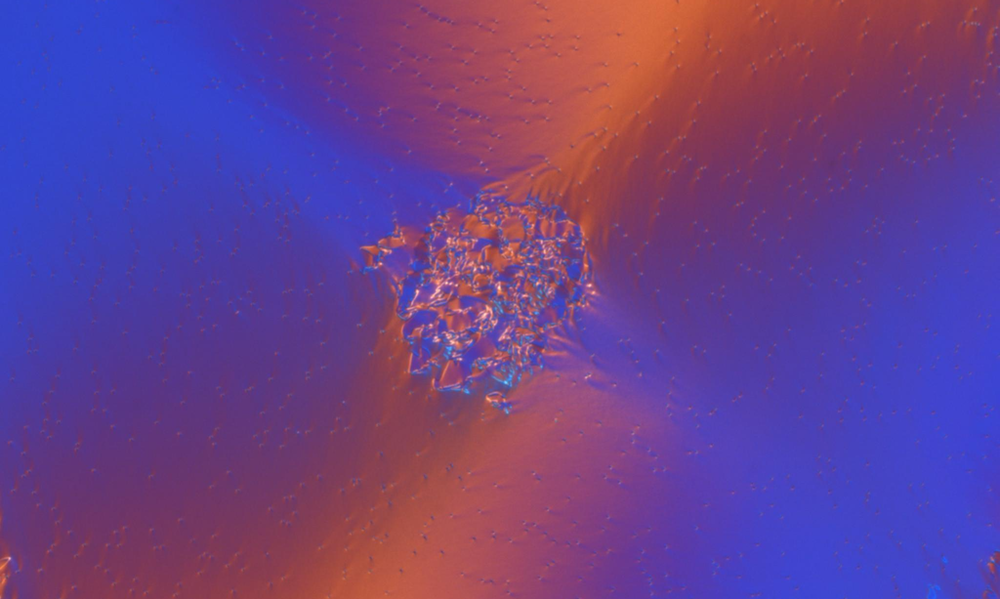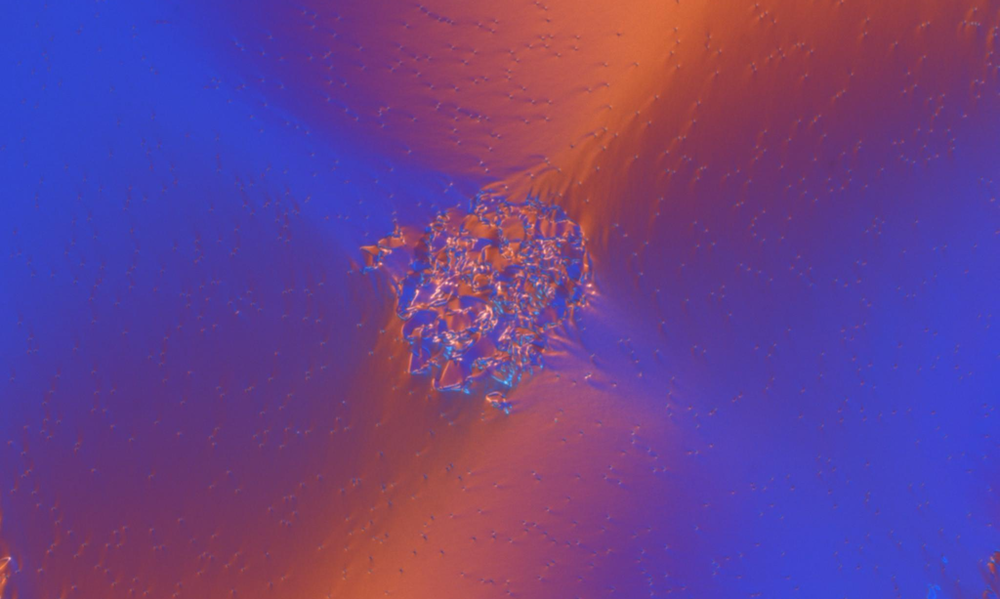Liquid Crystal Waves
Liquid crystals are used extensively in flat panel displays, where the light or dark state of each pixel is determined by the orientations of the liquid crystal molecules. Researchers are always looking for new liquid crystal phenomena to exploit, and now a team shows in a series of videos that they can generate traveling waves associated with the rotation of liquid crystal molecules [1]. The experiments demonstrate 3D control over the molecules’ orientations using an applied electric field in only one direction, a level of control that could be useful in future devices.
Jang-Kun Song of Sungkyunkwan University, South Korea, and his colleagues placed a commercial liquid crystal used for displays into the 3.5-micrometer gap between a pair of horizontal glass plates. The team also placed polarizers above and below the plates and oriented the polarizer axes at right angles. This arrangement is opaque when the rod-shaped liquid crystal molecules are oriented vertically or parallel to one of the polarizer axes but transmits light when they are in any other orientation.
The team illuminated the plates from below and filmed the liquid crystal’s response to a voltage applied across the gap. They found that particular repeating voltage patterns—for example, a square wave oscillating between +6 V and −6 V for 10 milliseconds followed by 20 milliseconds with no applied voltage—resulted in light-dark waves moving across the liquid crystal. The researchers varied the parameters for the voltage signal and measured the effects on the wave speed and direction.
Using a specialized microscopy technique, the researchers directly observed the molecular orientation behavior that is behind the waves. During the “on” portion of the cycle, the molecules react to the electric field by tilting away from vertical, following a slightly curved path as seen from above. During the “off” portion of the cycle, the molecules tilt directly back along a straight path. But when the timing is right, they begin the cycle again without ever reaching a fully vertical position. The net result is that the molecules gradually rotate, as seen from above, which causes the light transmission through the crossed polarizers to alternate between high and low. When neighboring groups of molecules rotate slightly out of phase, the visible effect is a series of traveling waves.
Song says that this is the first report of such a propagating wave in a liquid crystal, although it’s analogous to the waves of reorientation that one sees in a flock of birds or a school of fish when the group changes direction. Sungkyunkwan team member Vitaly Panov says the results demonstrate that a field pointing along a single direction can rotate molecules into any 3D orientation. Such control could be useful for applications where a spatially varying molecular alignment is required.
–David Ehrenstein
David Ehrenstein is a Senior Editor for Physics Magazine.
References
- V. P. Panov et al., “Rotation-time symmetry breaking in frustrated chiral nematic driven by a pulse-train waveform,” Phys. Rev. Lett. 129, 117801 (2022).





